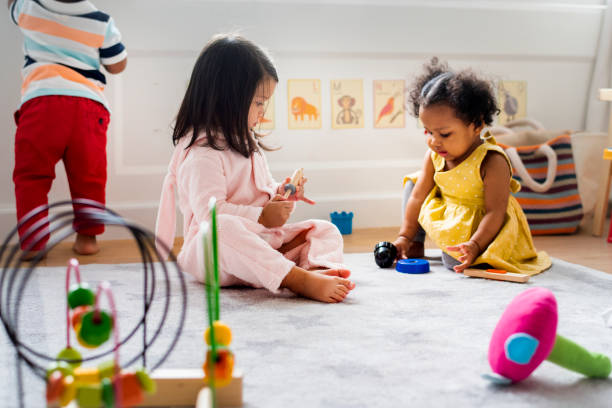Your Child’s Language Development
After 30 months, you can expect significant breakthroughs in your child’s language development. During this period, your child can form simple sentences by combining two or more words. A vocabulary of names and objects is rapidly forming. The thought process is developing, but it still has not gained systematicity. He talks non-stop, constantly asking for the names of objects and people. The structure of the sentences he constructs has childlike features, and he expects short and simple answers to the questions he asks. I can use the pronouns me/me and you correctly. In this period, children can generally say a single word as a sentence and use the words in plural. They can sing their name, surname, short and simple songs, and count from 1 to 3.
What you can do to support language development:
If you want to support your child’s language development during this period, talk to him/her a lot. Say what you do, name the objects you touch or show, read lots of illustrated stories. Most importantly, while doing these, be careful to say everything in simple and slow sentences in a way that your child can understand.
Make up your sentences only as subject-verb at first. If you’re reading a book, don’t forget to get down to your child’s level. You do not have to read everything that is written, take care to make short and easy-to-understand sentences that give meaning to the pictures. As your child progresses in language development, you can start making sentences a little more difficult and using more difficult words.
If your child isn’t speaking yet, encourage him to talk and encourage him to do so. Pay attention to your child’s body language, show that you care about what they are trying to tell you. Make him feel that you are excited to listen and understand him when he makes an effort. Even if you understand what your child wants to say from body language, ignore some things so that he can try to talk and explain himself to you!
In the Montessori method, a 3-stage method is used for language development. In the 2-year-old period, the focus is usually on the first two stages. For example, if you want to teach shapes in the first stage, bring two or three shapes in front of you. First show each one and name what they are (like pointing to a triangle shape and then slowly saying a triangle). In step 2, look at your child and ask, “Can you show me the triangle?” Do these for different shapes in a mixed way. You can use this method to teach different names in different periods. Sometimes you can work with objects, sometimes with pictures or even photographs, and first with two, then three, then more.
It is very important that your child’s language development is on time. Thus, they can begin to express themselves more quickly, to communicate more quickly, to grasp what is said around them faster and to take action. During this period, don’t be bothered by word mistakes or childish spoken language; Most of them correct themselves. They mostly use plural suffixes, inflectional suffixes, etc., whether they can express themselves correctly or not, whether they are naming correctly or not. Pay attention to whether they are using suffixes correctly. Most importantly, be patient. Instead of getting discouraged by saying that you are making mistakes when there are mistakes, take care to teach the truth by saying the correct way slowly.
